
Computex 2014 - Fractal Design
The first things we saw at the Fractal Design booth at Computex were, as you might expect, cases. Lots of them, in fact, as the company has just launched two new ranges, the Core X3 and the Core X5, with micro-ATX, mid-tower ATX and wide-body ATX models offered within each range. Full specifications for each of the seven new cases can be found on Fractal's website.Each of the Core X3 and Core X5 chassis are designed as entry level cases for each form factor they cover. They are value-oriented, but in a quick hands on they did not feel cheap or poorly constructed – Fractal cases rarely do. The X5 cases carry a slightly higher specification than their X3 brethren, with the main differences between the two being the inclusion (X5) or exclusion (X3) of the rear-mounted fan controller, as well as the way drives are mounted. The X5 cases use Fractal's traditional 3.5-inch/2.5-inch combination drive trays, wh,ile the X3 models require users to screw drives directly to a vertical bar. Other than the Core 1100 (which has the lowest spec), all other X3 and X5 cases support at least 240mm slimline radiators, with larger models adding to this water-cooling support. We should have at least one case from each range coming in shortly, so we can assess just how well Fractal is balancing price and performance.
Fractal was also showing off its dual chamber Node 804 chassis, a true micro-ATX chassis with five expansion slots. While this isn't new for Computex, it's still one of Fractal's latest cases, and its most noticeable feature is its rather flexible internal layout, which can be configured to balance the water-cooling and storage needs of users. There are also two nifty SSD mounts right behind the front panel, where you'll also find a hidden slimline optical drive mount. Both chambers can also house two 240mm radiators, and the case features fan control too. It has a UK retail price of £80 and again we should be getting one in very soon.
Another piece of news in the case department from Fractal is that it's beginning to work with system integrators to offer customised versions of existing cases (including boxing and packaging). This means the company can batch produce (at least one shipping container's worth of cases needs to be ordered) its cases with various modifications. These could include reducing drive mounts or fan mounts to lower production costs and thus retail pricing, or adding custom logos to panels, amongst other things. It will be interesting to see if retailers take advantage of this and to what extent.
Lastly, Fractal Design was showing off its new AIO water-coolers – the list of manufacturers getting onboard this bandwagon seems to increase almost every day. However, as you'll see, Fractal's Kelvin coolers are not just your standard Asetek rebrand. The range consists of the Kelvin T12 (120mm radiator), the Kelvin S24 (240mm radiator) and the Kelvin S36 (360mm radiator), with the latter being one of only two 360mm AIO coolers we've ever seen.
Fractal is targeting more premium users with the Kelvin range – prices may be a little high but there's also lots on offer. For starters, both the radiator and the waterblock are made entirely from copper, which is designed to be longer-lasting than aluminium based coolers as well as better performing. The rubber tubing also has an outer spring to aid flexibility and prevent kinks – we found that even when twisting the pipes quite severely they wouldn't kink. The cables are all nicely braided too.
While the Kelvin coolers will be sold only as complete units (i.e. with a waterblock, pump, tubes and radiator), they are not actually sealed units. Each of them has dedicated refill points and they can be expanded to incorporate other water-cooling gear as well (e.g. another waterblock), thanks to standard brass fittings. This also means users can replace the tubes should they see fit. As such, Fractal has co-designed its waterblock/pump unit with Alphacool and has used a stronger pump than your garden variety cooler so as to cope with the additional load should a user expand the system. This also means that flow rates and cooling abilities should be better than competing closed loop set-ups when using the cooler as it comes. This hybrid between all-in-one and fully custom water-cooling loops is an interesting direction for a largely stagnant market – Raijintek is also producing an AIO cooler with a more customisable nature.

MSI MPG Velox 100R Chassis Review
October 14 2021 | 15:04

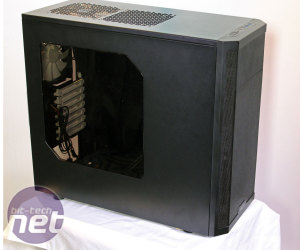
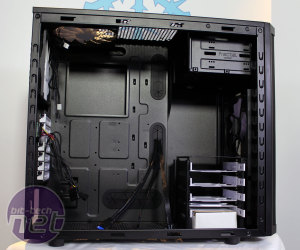
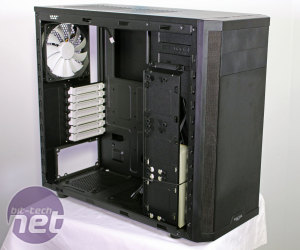
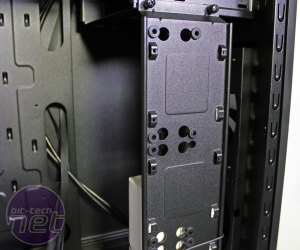
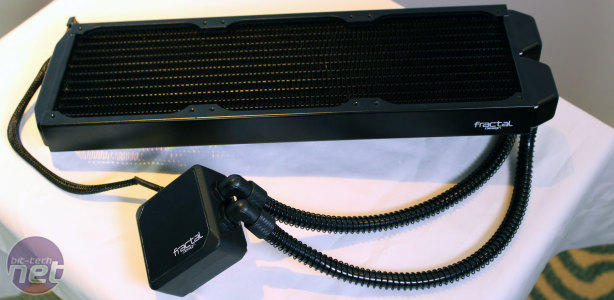
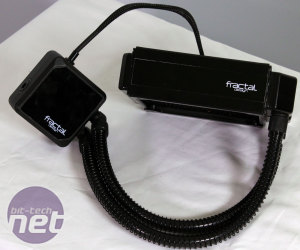
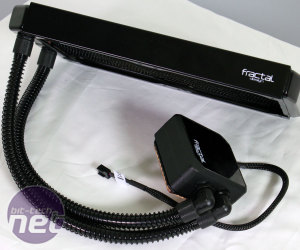
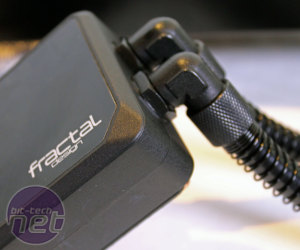








Want to comment? Please log in.